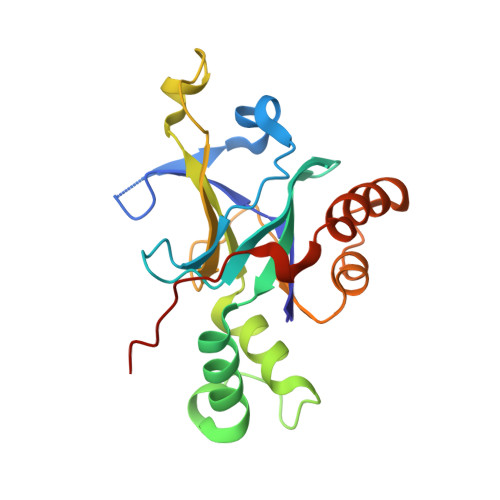Allosteric Inhibitors, Crystallography, and Comparative Analysis Reveal Network of Coordinated Movement across Human Herpesvirus Proteases.
Acker, T.M., Gable, J.E., Bohn, M.F., Jaishankar, P., Thompson, M.C., Fraser, J.S., Renslo, A.R., Craik, C.S.(2017) J Am Chem Soc 139: 11650-11653
- PubMed: 28759216
- DOI: https://doi.org/10.1021/jacs.7b04030
- Primary Citation of Related Structures:
5V5D, 5V5E - PubMed Abstract:
Targeting of cryptic binding sites represents an attractive but underexplored approach to modulating protein function with small molecules. Using the dimeric protease (Pr) from Kaposi's sarcoma-associated herpesvirus (KSHV) as a model system, we sought to dissect a putative allosteric network linking a cryptic site at the dimerization interface to enzyme function. Five cryogenic X-ray structures were solved of the monomeric protease with allosteric inhibitors bound to the dimer interface site. Distinct coordinated movements captured by the allosteric inhibitors were also revealed as alternative states in room-temperature X-ray data and comparative analyses of other dimeric herpesvirus proteases. A two-step mechanism was elucidated through detailed kinetic analyses and suggests an enzyme isomerization model of inhibition. Finally, a representative allosteric inhibitor from this class was shown to be efficacious in a cellular model of viral infectivity. These studies reveal a coordinated dynamic network of atomic communication linking cryptic binding site occupancy and allosteric inactivation of KHSV Pr that can be exploited to target other members of this clinically relevant family of enzymes.
Organizational Affiliation:
Department of Pharmaceutical Chemistry, University of California , San Francisco, California 94158, United States.















